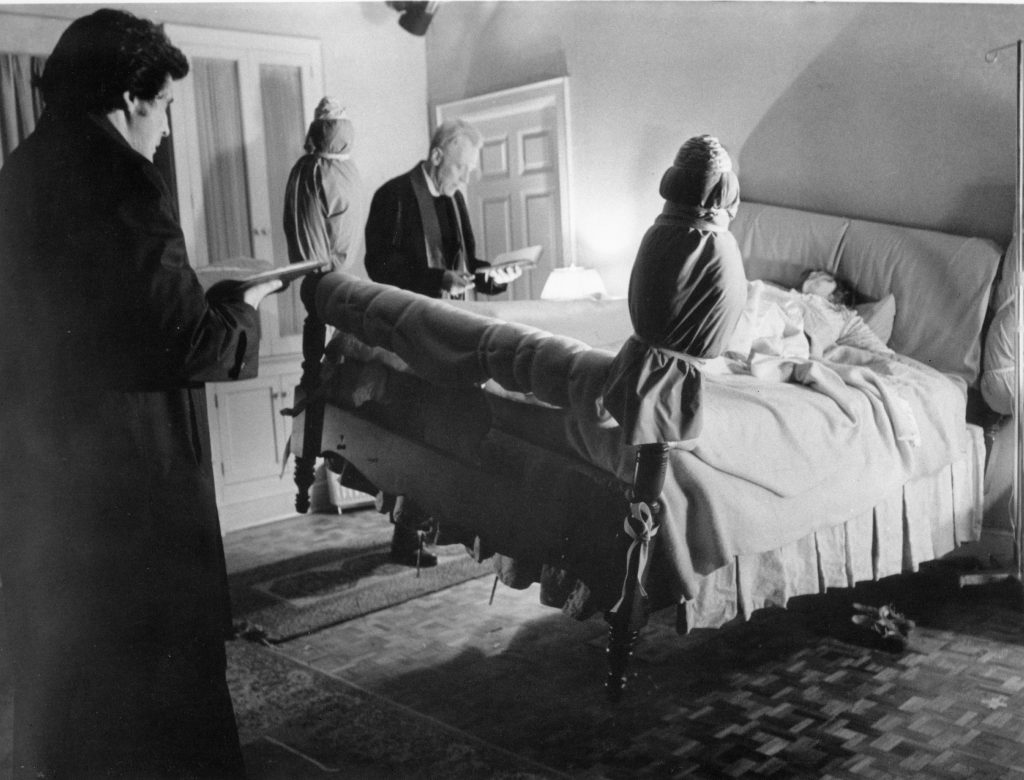William Friedkin’s 1973a film The Exorcist is one of the most highly regarded horror movies ever made. For those unfamiliar, the film centers around a 12 year-old girl named Regan. Satan possesses Regan’s body. She becomes violent, develops strength well beyond that of any 12 year-old, and, in a particularly famous scene, projectile vomits onto Karras, a priest attempting to exorcise her. This is all scary stuff, but at the end of the day, we must remind ourselves that it’s only a movie.
Well, some insist that the film closely mirrors real-world events. Father Walter Halloran—a priest who performed a real-world exorcism—claimed that the film was heavily exaggerated. And he would know. It was the exorcism he performed that inspired the book off of which The Exorcist is based.
The Story of Roland Doe

Note: the following story is based on the accounts of the Doe family, Reverend Luther Miles Schulze, and Father Walter Halloran.
The story begins in Cottage City, Maryland, 1949. A teenage boy (his exact age is up for debate) was mourning the loss of his recently deceased Aunt Harriet. The boy—who today is known only by the pseudonyms Roland Doe and Robbie Mannheim—had been especially close to his aunt, a practicing Spiritualist.
What is Spiritualism? According to Encyclopedia Brittanica, “Spiritualism is a movement based on the belief that departed souls can interact with the living. Spiritualists seek to make contact with the dead, usually through the assistance of a medium, a person believed to have the ability to contact spirits directly.”
Harriet had long instilled Spiritualist beliefs within Roland. And after her death, he attempted to contact her via his ouija board. It is not known whether or not he actually made contact with his aunt. But it seems that he certainly contacted something else, as around that time he began displaying signs of possession.
Enter the Exorcist
The entire Doe family began hearing strange sounds throughout the house (marching footsteps, scratching noises, and soft unintelligible voices). They even claimed to have seen furniture levitate.
Perhaps the greatest observable changes were within Roland himself. Once a bashful and quiet child, he had become violent and erratic for no apparent reason. He started developing scratch marks across his body, the origins of which were unknown.
The Doe family turned to their pastor Reverend Luther Miles Schulze for help. He volunteered to observe Roland overnight. He confirmed what the family had told him. Scratching noises emanated from the walls. Furniture moved on its own.
Schulze suggested that the Doe family have an exorcism performed on Roland.
The First Attempt to Exorcise Roland Doe
Schulze, a Protestant Christian, recommended that the family have a Catholic priest perform the exorcism. Exorcisms have a place within many religions throughout the world. However, Westerners most commonly associate them with Catholicism. In fact, in 1614, the Vatican even issued official guidelines for how priests should perform exorcisms. The church has updated said guidelines as recently as 1999.
Roland’s family first hired Father Edward Hughes to perform the exorcism. However, he never completed the process. Apparently, Roland—using demonic super strength—had broken free from the restraints holding him to the bed, snapped off a bed spring, and slashed Hughes’s arm with it.
The Doe family was not going to give up on exorcising Roland’s supposed demon. They soon hired Father Raymond Bishop and his colleague Father Walter Halloran to perform another exorcism.
The Exorcist, a Misleading Title?
Bishop and Halloran spent weeks performing exorcisms on Roland. According to Halloran, words like “evil” and “hell” would inexplicably appear on the boy’s arms. His inhuman strength and tendency toward violence made him a threat to the priests’ safety. At one point, he even broke Halloran’s nose.
After over 30 unsuccessful attempts at exorcising the Roland’s demons, the priests decided to take a new plan of action. They baptized him instead. Apparently, this was all it took for the demon to leave Roland’s body. (This begs the question, why were the 30+ exorcisms even necessary in the first place?)
Halloran even claimed that the boy began speaking as if he were the archangel Michael, shouting, “Satan, I am Michael, and I command you to leave this boy now!”
Inspiration for The Exorcist
By all accounts, Roland Doe went on to live a happy life, never again showing signs of possession. His story was largely forgotten until it was rediscovered by author William Peter Blatty. Blatty used it as inspiration for his 1971 novel The Exorcist. The book inspired the film of the name.
The real-world events that inspired The Exorcist are arguably far more frightening than the film itself. And while the truth to the story is debatable, it is still fascinating to learn of the basis for one of the greatest horror movies of all time.